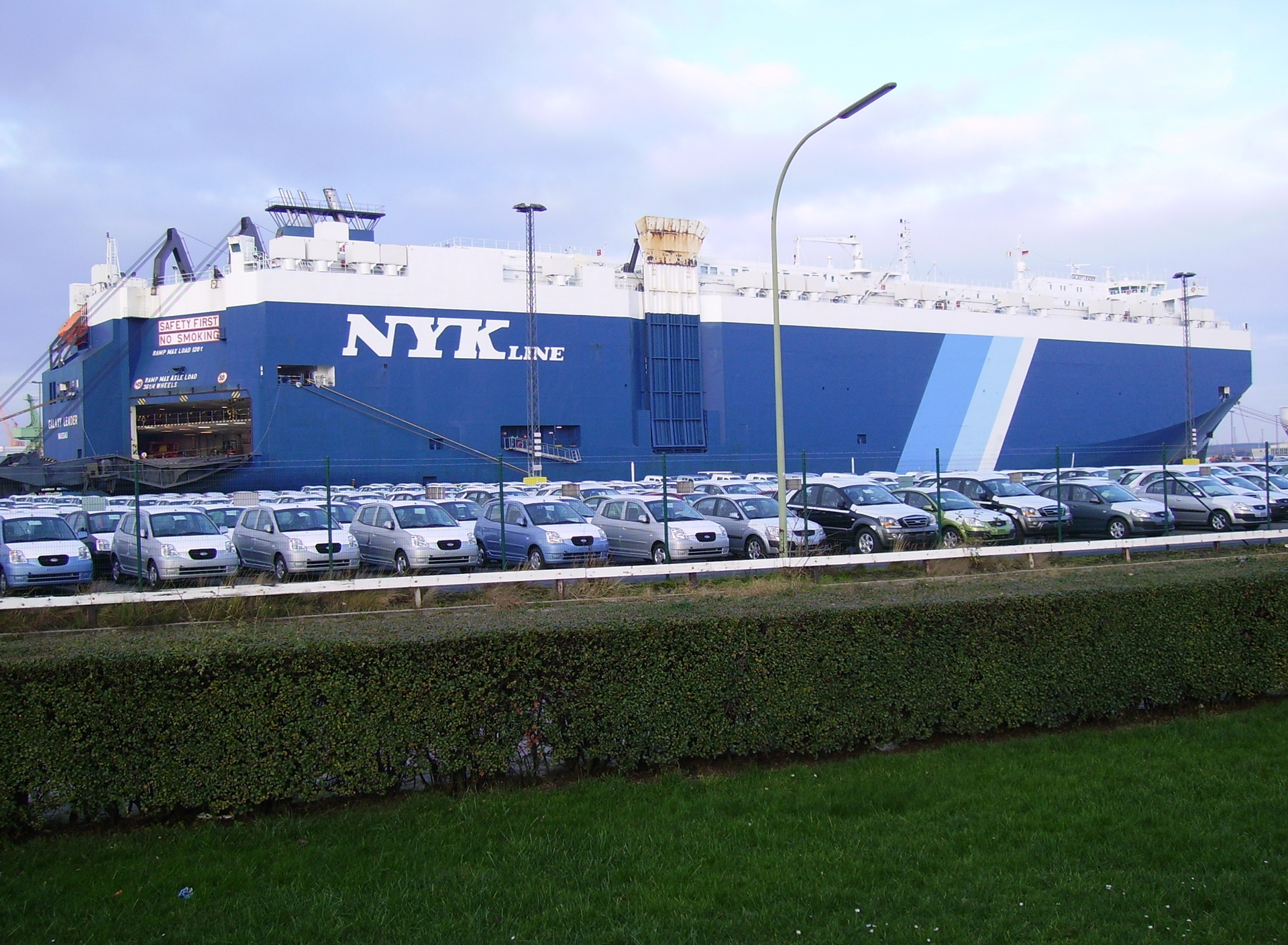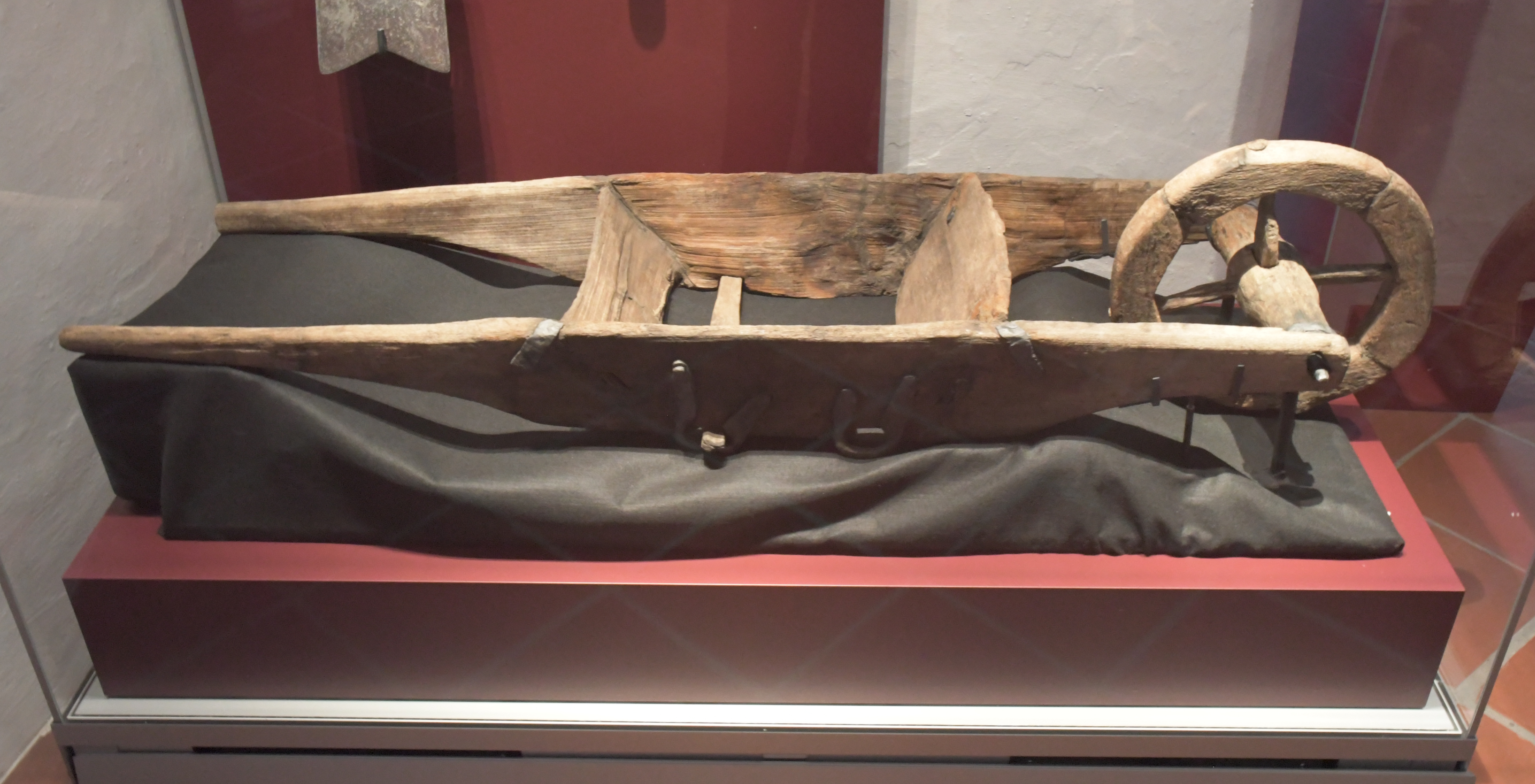|
Coal Trimmer
A coal trimmer or trimmer is a position within the engineering department of a coal-fired steamship that involves all coal handling duties. Their main task is to ensure that coal is evenly distributed within a ship to ensure it remains trim in the water. Their efforts to control the fore-and-aft angle at which a ship floats are why they are called “trimmers”. Without proper management of the coal bunkers, ships could easily list due to uneven distribution of the coal. The role of trimmers starts with the bunkering of coal, distributing it evenly within the bunkers, and then providing a consistent delivery of coal to the stoker or fireman working the vessel's boilers. Coal trimming was also a role based at the docks that involved levelling out the coal in a ship's hold to ensure that the ship was safe to travel. Coal was transported to the docks on railway wagons, and the coal was tipped into the ship. As the coal was loaded into a hold of the ship it would form a conica ... [...More Info...] [...Related Items...] OR: [Wikipedia] [Google] [Baidu] |
Spontaneous Combustion
Spontaneous combustion or spontaneous ignition is a type of combustion which occurs by self-heating (increase in temperature due to exothermic internal reactions), followed by thermal runaway (self heating which rapidly accelerates to high temperatures) and finally, autoignition. It is distinct from (but has similar practical effects to) pyrophoricity, in which a compound needs no self-heat to ignite. The correct storage of spontaneously combustible materials is extremely important, as improper storage is the main cause of spontaneous combustion. Materials such as coal, cotton, hay, and oils should be stored at proper temperatures and moisture levels to prevent spontaneous combustion. Reports of spontaneous human combustion are not considered truly spontaneous, but due to external ignition. Cause and ignition Spontaneous combustion can occur when a substance with a relatively low ignition temperature such as hay, straw, peat, etc., begins to release heat. This may occur in ... [...More Info...] [...Related Items...] OR: [Wikipedia] [Google] [Baidu] |
Construction And Extraction Occupations
Construction are processes involved in delivering buildings, infrastructure, industrial facilities, and associated activities through to the end of their life. It typically starts with planning, financing, and design that continues until the asset is built and ready for use. Construction also covers repairs and maintenance work, any works to expand, extend and improve the asset, and its eventual demolition, dismantling or decommissioning. The construction industry contributes significantly to many countries' gross domestic products (GDP). Global expenditure on construction activities was about $4 trillion in 2012. In 2022, expenditure on the construction industry exceeded $11 trillion a year, equivalent to about 13 percent of global GDP. This spending was forecasted to rise to around $14.8 trillion in 2030. The construction industry promotes economic development and brings many non-monetary benefits to many countries, but it is one of the most hazardous industries. For exampl ... [...More Info...] [...Related Items...] OR: [Wikipedia] [Google] [Baidu] |
Peter MacCallum
Sir Peter MacCallum (14 July 1885 – 4 March 1974) was a Scottish-born Australian oncologist and the co-founder and eponym of the Peter MacCallum Cancer Centre in Melbourne. Background and early life Peter MacCallum was born in Glasgow, Scotland on 14 July 1885. He was the son of Peter MacCallum, a New Zealander, living at Gairfield House in the Maryhill district of Glasgow. The family returned to New Zealand in his youth and he was raised in Christchurch, his father's home town. He was sent to work at the age of 12. He was able to return to school and continued his entire education through a series of scholarships and part-time work, including working his way back to the United Kingdom as a coal trimmer. He eventually obtained an MB ChB back in Scotland at the University of Edinburgh in 1914, just in time to join the British Army in France. Career During the First World War, he was awarded the Military Cross and was twice mentioned in dispatches. In 1918, he was badl ... [...More Info...] [...Related Items...] OR: [Wikipedia] [Google] [Baidu] |
Frank Bailey (firefighter)
Frank Arthur Bailey (26 November 1925 – 2 December 2015) was a Guyanese-British firefighter and social worker who is known as being one of the first black firefighters in the United Kingdom. Born in British Guiana, he first worked on a German trade ship which led him to move to New York where he soon found work at a hospital, becoming a medical assistant. In opposition to racially segregated practices, he led a walkout at the hospital. In 1953, he moved to London and came across a Fire Brigades Union (FBU) delegate who told him that black people were not employed by the fire service because they were "not educated or strong enough", though he challenged this by applying as a firefighter. In 1955, he was accepted and became one of the first black firefighters in the UK, though left 10 years later due to being consistently turned down for promotion due to inherent racism in the service. Afterwards, he became a social worker, guardian ''ad litem'' and a legal adviser, retiring ... [...More Info...] [...Related Items...] OR: [Wikipedia] [Google] [Baidu] |
Merchant Ship
A merchant ship, merchant vessel, trading vessel, or merchantman is a watercraft that transports cargo or carries passengers for hire. This is in contrast to pleasure craft, which are used for personal recreation, and naval ships, which are used for military purposes. They come in a myriad of sizes and shapes, from inflatable dive boats in Hawaii, to 5,000-passenger casino vessels on the Mississippi River, to tugboats plying New York Harbor, to oil tankers and container ships at major ports, to passenger-carrying submarines in the Caribbean. Many merchant ships operate under a "flag of convenience" from a country other than the home of the vessel's owners, such as Liberia and Panama, which have more favorable maritime laws than other countries. The Greek merchant marine is the largest in the world. Today, the Greek fleet accounts for some 16 per cent of the world's tonnage; this makes it currently the largest single international merchant fleet in the world, albeit ... [...More Info...] [...Related Items...] OR: [Wikipedia] [Google] [Baidu] |
Torsten Billman
Torsten Edvard Billman (6 May 1909 – 6 April 1989) was a Swedish artist who worked as a printmaker, illustrator, and buon fresco painter. He counts as one of the 20th century's premier wood-engravers.Torsten Billman satirarkivet.se, retrieved 28 June 2014 The poet wrote about Torsten Billman: "To those, who with the word art visualise large, magnificent, 'striking' canvases Torsten Billman doesn't have not much to offer. His art serves the simple, neglected, homeless of existence. It features the fellows from the Nippon and other ships, marked by the hard life in ports as well as on board. His art shows the interiors of East End bars, where you get acquainted with the dark ... [...More Info...] [...Related Items...] OR: [Wikipedia] [Google] [Baidu] |
Crew Of The RMS Titanic
The crew of the RMS ''Titanic'' were among the estimated 2,240 people who sailed on the maiden voyage of the second of the White Star Line's ''Olympic''-class ocean liners, from Southampton, England, to New York City in the United States. Halfway through the voyage, the ship struck an iceberg and sank in the early morning of 15 April 1912, resulting in the deaths of over 1,500 people, including approximately 688 crew members. Crew The following is a full list of known crew members who sailed on the maiden voyage of the RMS ''Titanic''. Included in this list are the nine-member Guarantee Group and the eight members of the ship's band, who were given passenger accommodations and treated as both passengers and crew. They are also included in the list of passengers on board RMS ''Titanic''. Crew members are colour-coded, indicating whether they were saved or perished. The crew member did not survive The crew member survived Survivors are listed with the lifeboat from wh ... [...More Info...] [...Related Items...] OR: [Wikipedia] [Google] [Baidu] |
Titanic
RMS ''Titanic'' was a British ocean liner that sank in the early hours of 15 April 1912 as a result of striking an iceberg on her maiden voyage from Southampton, England, to New York City, United States. Of the estimated 2,224 passengers and crew aboard, approximately 1,500 died (estimates vary), making the incident one of the deadliest peacetime sinkings of a single ship. ''Titanic'', operated by White Star Line, carried some of the wealthiest people in the world, as well as hundreds of emigrants from the British Isles, Scandinavia, and elsewhere in Europe who were seeking a new life in the United States and Canada. The disaster drew public attention, spurred major changes in maritime safety regulations, and inspired a lasting legacy in popular culture. It was the second time White Star Line had lost a ship on her maiden voyage, the first being in 1854. ''Titanic'' was the largest ship afloat upon entering service and the second of three s built for White Star Line. ... [...More Info...] [...Related Items...] OR: [Wikipedia] [Google] [Baidu] |
Wheelbarrow
A wheelbarrow is a small hand-propelled load-bearing vehicle, usually with just one wheel, designed to be pushed and guided by a single person using two handles at the rear. The term "wheelbarrow" is made of two words: "wheel" and "barrow." " Barrow" is a derivation of the Old English "barew" which was a device used for carrying loads. The wheelbarrow is designed to distribute the weight of its load between the wheel and the operator, so enabling the convenient carriage of heavier and bulkier loads than would be possible were the weight carried entirely by the operator. As such it is a second-class lever. Traditional Chinese wheelbarrows, however, had a central wheel supporting the whole load. Use of wheelbarrows is common in the construction industry and in gardening. Typical capacity is approximately of material. A two-wheel type is more stable on level ground, while the almost universal one-wheel type has better maneuverability in small spaces, on planks, in water, or when ... [...More Info...] [...Related Items...] OR: [Wikipedia] [Google] [Baidu] |
Engine Department (ship)
An engine department or engineering department is an organizational unit aboard a ship that is responsible for the operation, maintenance, and repair of the propulsion systems and the support systems for crew, passengers, and cargo. These include the ship engine, fuel oil, lubrication, water distillation, separation process, lighting, air conditioning, and refrigeration. The engine department emerged with the arrival of marine engines for propulsion, largely during the later half of the 19th century. Due to advances in marine technology during the 20th century, the engine department aboard merchant ships is considered equally important as the deck department, since trained engine officers are required to handle the machinery on a ship. The engine department takes care of the engine room aboard a ship. Rotations vary depending on the vessel or company. Whoever is on a rotation has to stand watch to look over the engine and its components. There are different crew members for wa ... [...More Info...] [...Related Items...] OR: [Wikipedia] [Google] [Baidu] |






